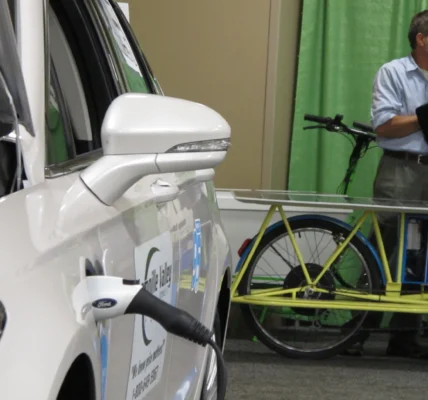Before you park your car the next time in a multi-level parking garage, you may want to review the details of your insurance policy.
The reason: electric vehicles, which comprise a rapidly growing proportion of North America’s vehicle fleet, are much heavier than conventional cars powered by internal combustion engines (ICE). This, coupled with the fact that many garages were built many years ago and designed for a lighter structural load, suggests the presence of significant risk of collapse 24/7.
EVs are generally hundreds to even thousands of pounds heavier than comparably sized ICE vehicles, primarily due to the EV’s battery, which weighs considerably more than a conventional car engine. For example, a 2023 GMC Hummer EV full-size pickup truck weighs more than 9,000 pounds, including a 2,900-pound battery. In comparison, the 2023 full-size, ICE-powered GMC Sierra pickup truck weighs less than 6,000 pounds, according to Kelly Blue Book.
There has already been a recent, high-profile garage collapse. In mid-April, a four-story garage that was nearly 100 years old in New York City’s Financial District collapsed, killing one person and injuring five others. The four-story building “pancaked … all the way to the cellar floor,” according to New York’s acting Department of Buildings commissioner.
Unfortunately, many other garages across North America may carry similar risks. Indeed, more than 40 other multi-story parking garages exist in New York City that are as old, or older than the garage which collapsed, according to The New York Times. A big risk among older New York buildings, presumably including parking garages, is the structures frequently utilized cheaper cinder concrete — cement mixed with cinders from steel furnaces versus concrete mixed with gravel – as a key building material. Cinder concrete is more vulnerable to water and salt than stone concrete.
Furthermore, older garages, which are rarely inspected — after all, they are only garages — were likely built to accommodate a quantity of vehicles which were much lighter than today’s versions. Indeed, even before factoring in the new wave of heavy EVs, the average weight of a U.S. car has increased to 4,300 pounds from 3,400 pounds thirty years ago, per Evercore ISI.
Perhaps even more chilling, risks for many garages are much more concrete (pardon the pun) and immediate. In New York City alone, reporters from The New York Times “identified more than three dozen garages across the city that have recently been cited for crumbling ceilings, exposed and rusting reinforcing bars, and other defects.”
Doubtless, similar conditions exist in multi-storage garages in many other large North American cities, particularly those affected by constant freeze-thaw conditions.








